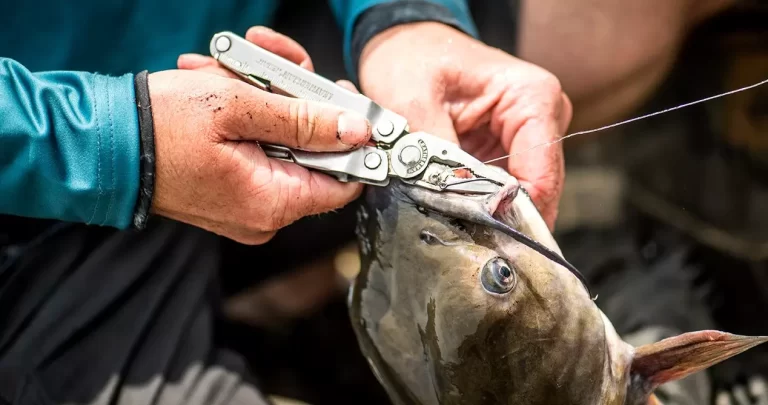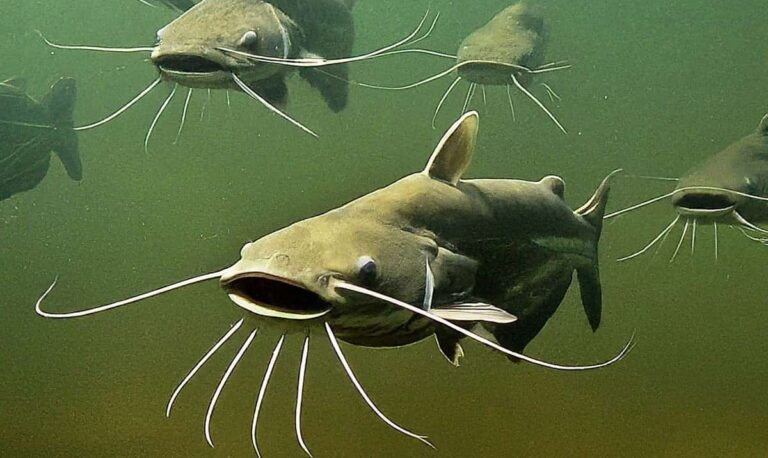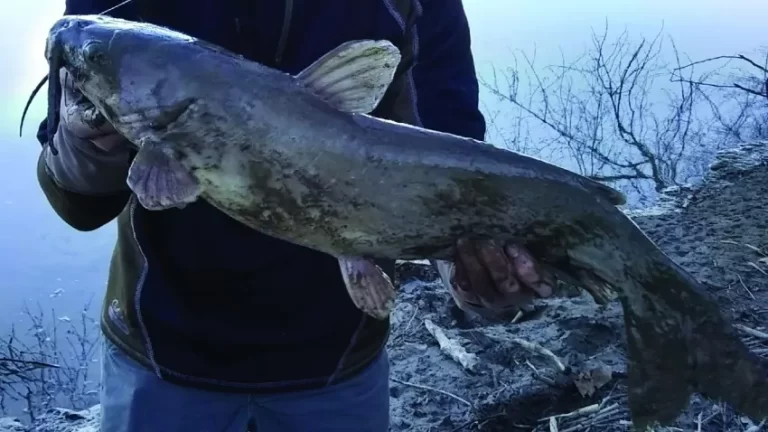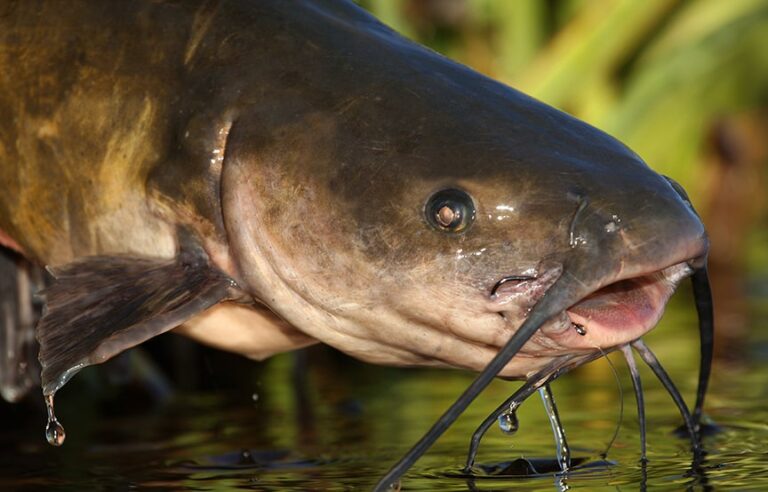Using Nightcrawlers for Catfish: Do They Work and How to Fish Them?
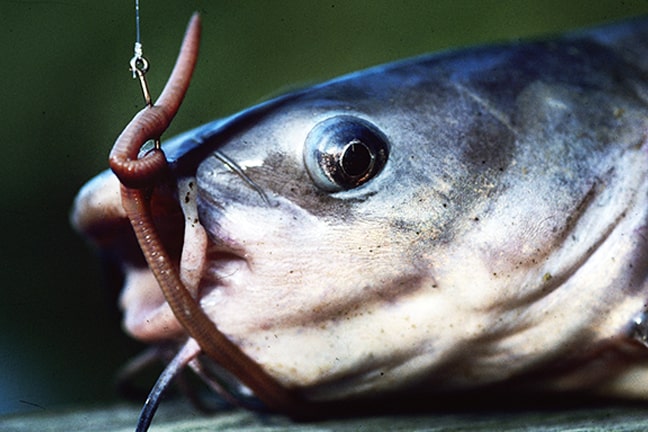
All of us have dug through are back yards looking for nightcrawlers that we can take to our local pond and catch some fish.
Nightcrawlers are usually thought of as a bluegill or panfish bait.
However, using nightcrawlers for catfish can be very effective and is one of the best live bait strategies for catfishing.
Are Nightcrawlers Good for Catfish?
Yes, nightcrawlers are a great catfish bait. These worms are a natural presentation that catfish love.
The wriggling nightcrawlers create vibrations that catfish can easily feel and find. They also give a realistic scent, since they are in fact real.
One of the best things about fishing nightcrawlers is that they are easy to find and completely free.
Just kick around some leaves, flip over some logs, or dig into the dirt and you will find countless worms that will catch you loads of catfish.
Also read: Best Catfish Baits from the Grocery Store
How Do You Rig a Nightcrawler for Catfish?
There are a few ways you can rig nightcrawlers, but my favorite is always to use a slip sinker rig and throw 3-4 of these worms onto a circle hook.
The slip sinker rig is my go-to catfish rig because it keeps your bait in one spot without the fish being able to detect the weight.
A common rigging technique is to fish these worms 1-2 feet below a spring slip or pencil bobber.
Usually, fisherman will also attach a light split shot about half way down below the bobber.
I don’t love this rig because small bass and panfish will often bite or steal your worms before the catfish have a chance to get to it.
Best Nightcrawlers for Catfish
The bigger and livelier the better. Store bought nightcrawlers will be very big, but they will tend to be sluggish and not move around as much as fresh ones.
The worms you catch in your backyard will be very energetic and lively, but it is hard to find big ones.
The best nightcrawlers are big ones that you find and catch yourself.
I never buy worms. If I can’t find any big ones in the yard, I will just rig 3-4 on the hook at one time to make up for it.
Catfish Species that Nightcrawlers Catch
Nighcrawlers can catch all species of catfish, but they work better for some more that others.
Typically, the smaller the catfish, the better these worms will work. They are perfect for bullheads and small channel catfish, but won’t work great for big blue catfish and flat heads.
This is mainly because nightcrawlers just aren’t a big meal for big catfish.
Even if you buy huge worms or load your hook up with lots of worms, the size of these nightcrawlers just don’t compete with a big dead bluegill or shad. Here is the order:
- Bullhead catfish
- Channel catfish
- Blue catfish
- Flathead catfish
Finding Nightcrawlers

Just go into your backyard or local park. Look for dark, damp areas like under a pile of leaves, under a log or rock, or a 4-12 inches into the dirt.
Nightcrawlers are really easy to find and even though it can put some dirt under your fingernails, it is well worth it.
Keeping Nightcrawlers Alive
These worms are very hardy and resilient. Just throw them in a bucket or small plastic container with some cool, moist dirt and they will survive for days.
If you want to preserve them for even longer, you can throw the container in the fridge.
This will slow their metabolism and put them is a semi-hibernation state. Worms can survive for up to 2 weeks in a refrigerator.
Just make sure the dirt doesn’t dry out and the worms will be just fine.
Where to Fish Nightcrawlers
Nightcrawlers are going to work best in small ponds. The worst place to fish them is river systems.
The rough current and flowing water kills the nightcrawlers very quickly and can even tear them off the hook.
Ponds are usually full of bullhead and channel catfish that cruise around looking for an easy meal and nightcrawlers seem to catch these catfish very well.
Nightcrawlers are a very effective pond and are one of the best cold water catfish baits.
Tips for Using Nightcrawlers for Catfish
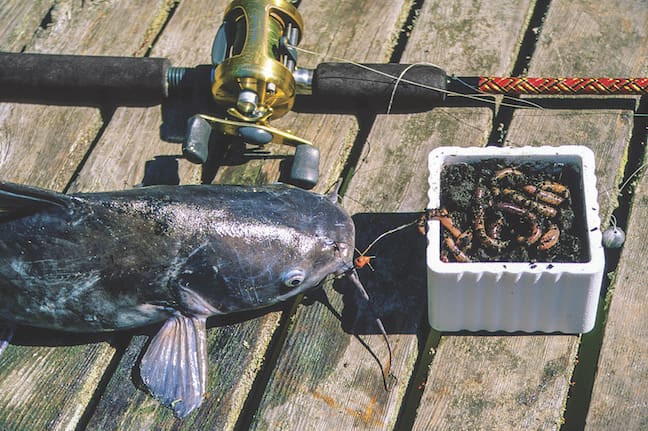
Don’t Recast Too Often
The more you cast and retrieve your nightcrawlers, the more damage you do to them.
Recasting very often will cause your nightcrawlers to die very quickly and make them less appealing to catfish.
Use Light-Wire Hooks
This is again about keeping your nightcrawlers alive. The lighter and thinner the hook is, the less damage it does to the worms.
This can be a bit difficult since catfish often get quite bit and put up a serious fight.
A tuff catfish can bend or even break hooks that are too light, so you have to find a balance here.
Just use as light-wire hooks you can possibly get away with while still being confident your target fish won’t bend them out.
Avoid Bluegill
Bluegill will steal your worms within seconds of your cast hitting the water.
To avoid these pesky panfish, try to fish a bit deeper water since bluegill tend to hold to the banks.
Also, avoid vegetation like weeds and lily pads because vegetation always holds lots of bluegill.
Also read: Bank Fishing for Catfish at Night
Reeling this In
Whether you are an experienced angler or a young beginner looking to catch your first whiskered swimmers, nightcrawlers are a great way to catch catfish.
As with any live bait, it is key that you keep your nightcrawlers alive and as wriggling as possible.
Catfish are one of the most fun fish to catch. Fighting a big cat and hearing the drag pull out will put a smile on anyone’s face. Get out there and catch some catfish!

